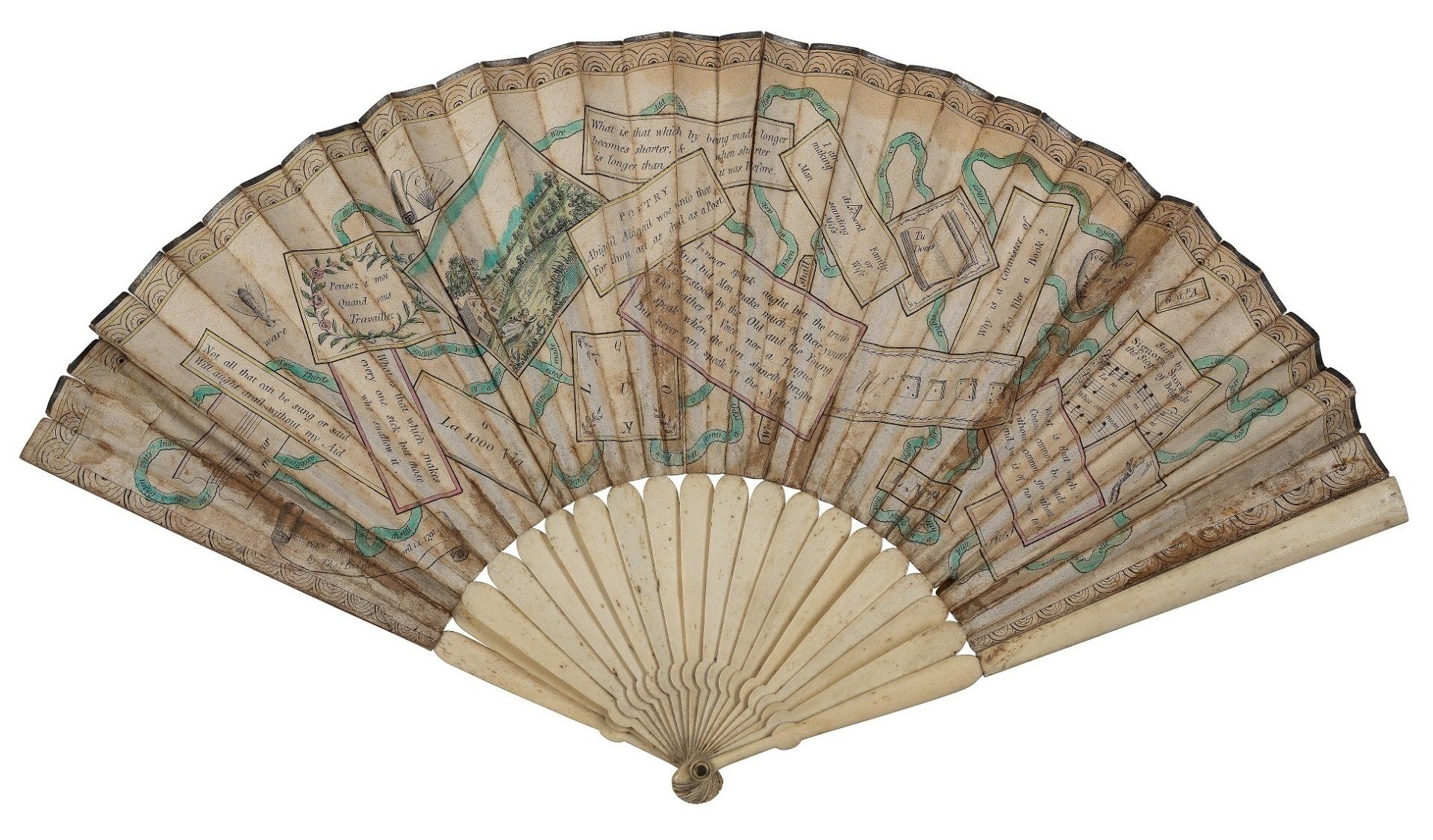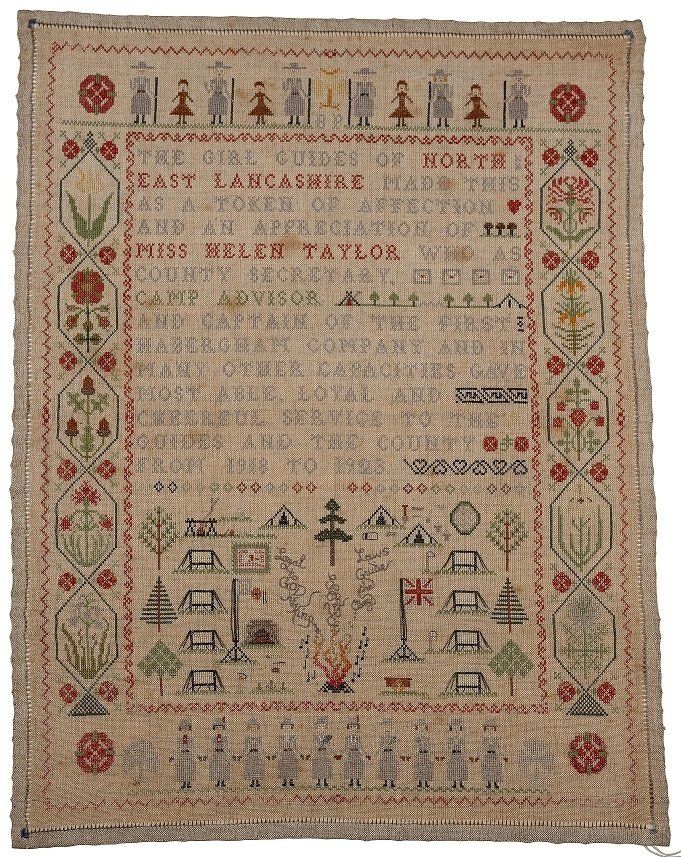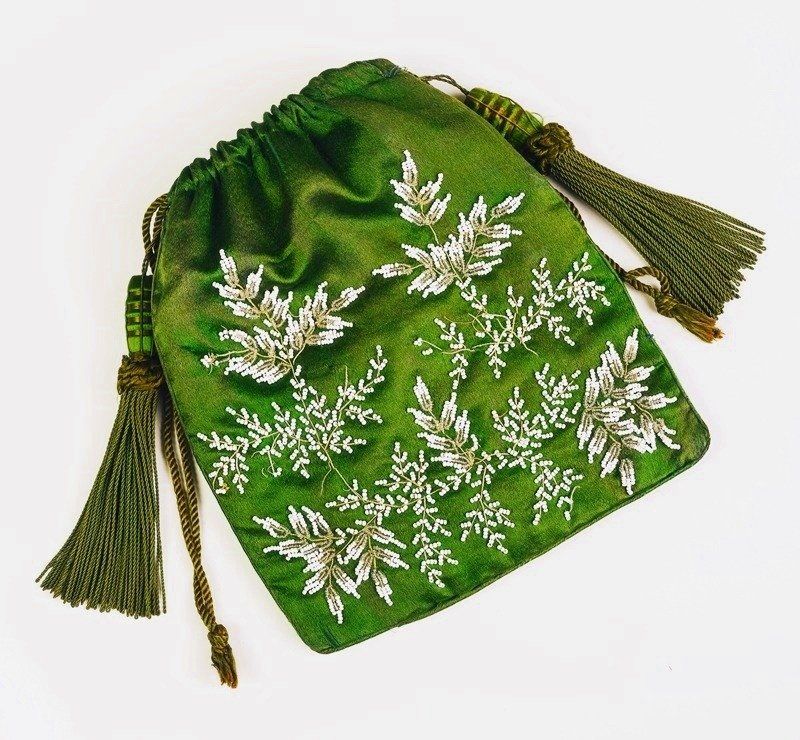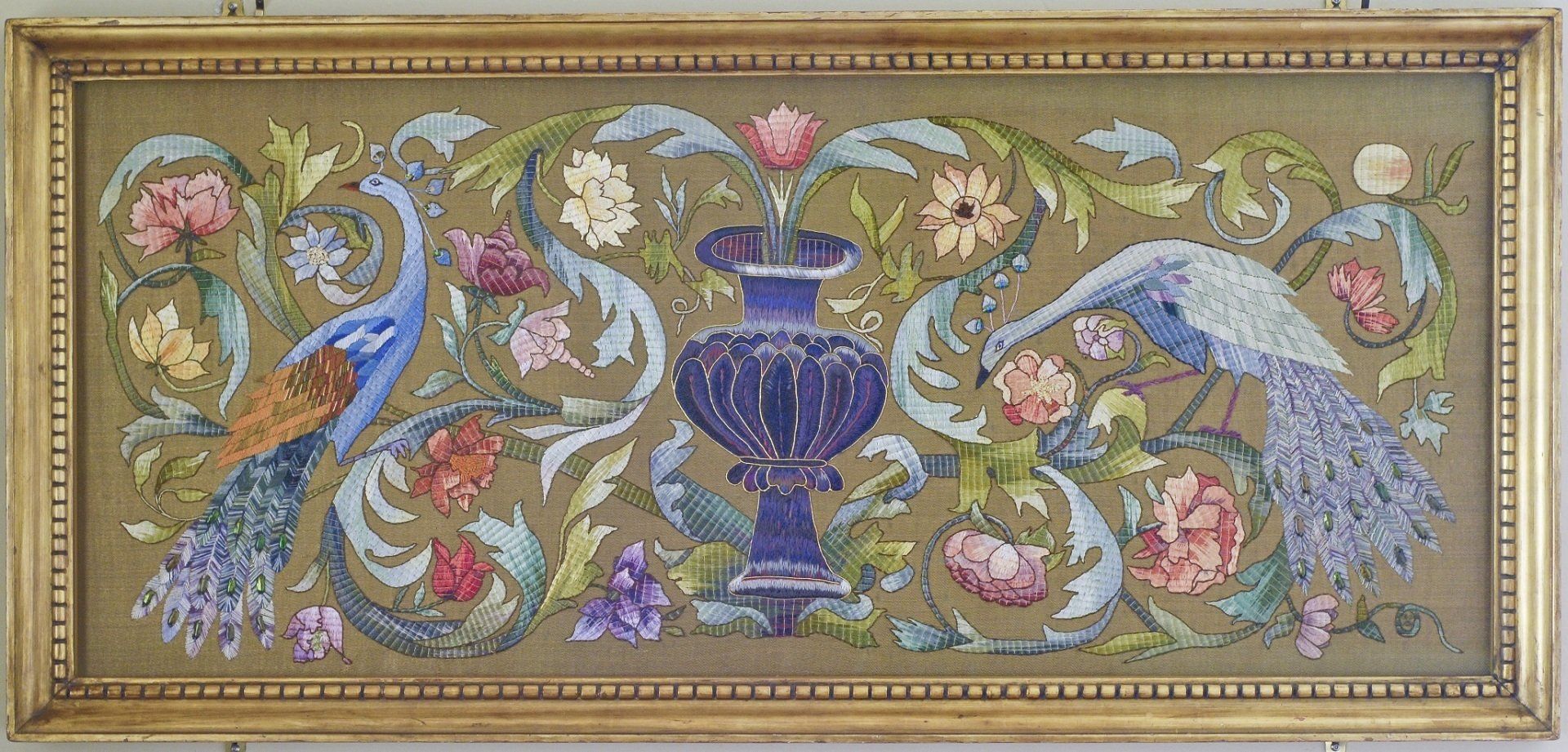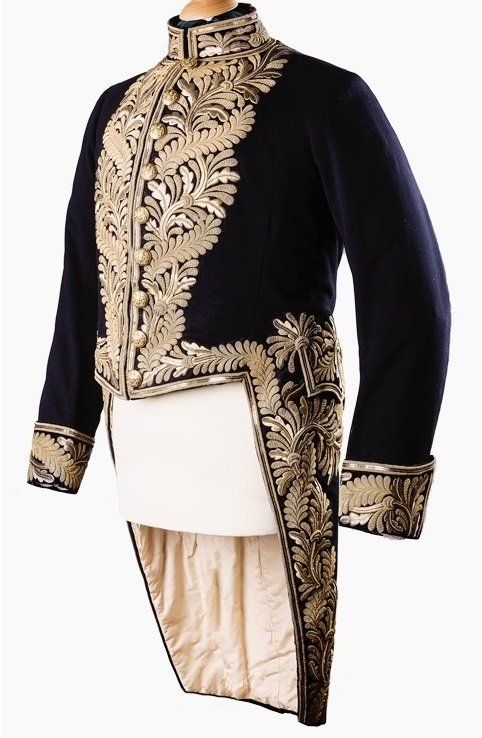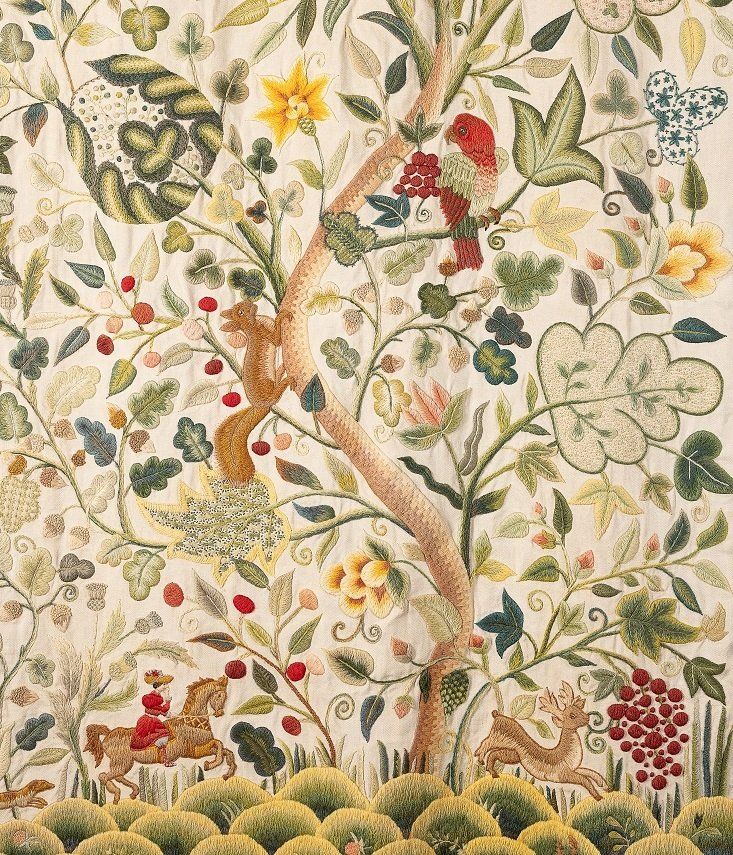Sponsor an Object
Sponsor one of an eclectic range of objects - each with its own fascinating story.
You can help Gawthorpe Textiles Collection to care for its unique items by adopting one of our objects for a year – either for yourself, or as an unusual gift for any someone else for any occasion.
Simply browse through our list of 20 of the best-loved objects from our collection, available across five different tiers, starting from a one off payment of £25.
When you adopt an object you will receive a digital certificate along with an image of your object.
By adopting an object, you will be supporting the funding of curation and preservation, ensuring that GTC continues to be an inspiring place for everyone.
To find out more information on how to sponsor an object or to request bank transfer details instead of the online payment option below please contact:
Christina Cope, Fundraising Development Officer on 01282 773963 or email
fundraising@gawthorpetextiles.org.uk
We use trusted online payment system GoCardless - when you click on the amount that you wish to kindly donate to us, you will be directed to GoCardless who will process the transaction and send the money to us.
Sponsoring and object helps us to plan for our future by providing a predictable income, something which is invaluable when we are budgeting for services both now and for the future.
Conundrum Fan - 1791
Made by William Werndly, fan maker to his Majesty, this fan is made of vellum with simple bone sticks. The design includes illustrations, riddles, letters, words and phrases. Fans of this type were popular in the late 18th century and would have been a source of amusement for their owners and their friends.
Item Number: 27624
Girl Guide Sampler - 1923
Designed by Rachel Kay-Shuttleworth this sampler was made by the Girl Guides and Brownies of North East Lancashire who all put in at least one stitch. The design is worked in silk on hand woven linen. At the bottom, in the centre left is Rachel as County Commissioner, shown with a silver cockade in her hat.
Item Number: 6760
Indonesian Sarong - 1930
The complex design of this Indonesian sarong is intricately decorated with spiders, webs and insects, left white by the resist. These areas in white had to have wax applied to them each time the fabric was dyed, a painstaking and detailed process showing great skill by the maker.
Item Number: 13071
Robert Hindle & Co - 1870
A selection of hand block printed lightweight wool and cotton fabrics from Robert Hindle and Co. Calico Print Works, Sabden, Lancashire. These samples were intended for export to India and combine tartans, geometrics, florals and paisleys. The bright colours are the result of using early chemical dyes.
Item Number: 6629
Peonie Cushion Cover
c.1900
The design typifies the Arts and Crafts Movement. It was most likely bought as a kit, possibly from Morris & Co., although many other companies produced similar kits. The piece was embroidered by Margery, Lady Daniel (1880- 1960) for her sister Sybil Welsh. The embroidery technique used is a densely worked darning stitch.
Item Number: 11463
Indian Embroidered Stole early 19th Century
This fine woollen stole from Kashmir was probably made for the European export market. Such stoles were desirable fashion accessories in Europe during the 18th and 19th centuries. The embroidery is worked using lustrous floss silk in satin stitch. Each section is outlined in black silk, a characteristic of embroidery from the Delhi area.
Item Number: 27163
Christian Lacroix Tartan Jacket France, 1991-22
A vibrantly coloured, woollen jacket by French fashion designer Christian Lacroix. The design incorporates dense applications of sequins, rhinestones and faux gemstones, to embellish the pockets by Lesage of Paris. Checks and plaid were highly fashionable during the 1990s and this jacket was made for Anna Wintour, Editor-in-Chief of US Vogue.
Item Number: T44
Beaded silk satin reticule c.1810-1835
This vibrant green satin reticule belonged to Elizabeth Batts Cook (1742-1835), the wife of explorer and navigator Captain James Cook. It has a simple rectangular shape and drawstring closure.
The tiny white and clear beads are arranged in a stylised design of fern fronds and leaves and the large silk cord and passementrie tassels add further embellishment.
Item Number: 18712
Wedding dress
1844
Wedding dress of Sarah Ann Fletcher (1820-1904) on her marriage to James William Kenyon (1819-1910) on 27 March 1844 in Bury Parish Church. The dress is typical of the early Victorian era and includes an accompanying bertha and pelerine cape. These accessories would have allowed it to be later worn as a formal afternoon, reception or dinner dress.
Item Number: 782
Travelling Bonnet, Prussia
c. 1806-10
Bonnet belonging to Queen Louise of Prussia (1776-1810), first wife of King Frederick William III. The bonnet is made of brocade, silk and metal thread. The blue grey bonnet ribbons bear cornflowers, Prussia’s national flower. The upturned brim has pleated lace with a van dyke edge in front of a handsome gold passementerie.
Item Number: 4029
Empire Line Evening Gown
c. 1819-23
Evening gown of cream silk net in the Empire style with high waisted bodice. Decorated with silvered blown glass beads, chenille and silk floss wrapped card shapes. Dresses such as this rarely survive due to the delicacy of the net.
This dress, along with a blue gown of similar style was believed to have belonged to the Wilson family of Eshton Hall near Skipton, North Yorkshire.
Item Number: 5377
Patchwork and appliqué cot coverlet, 1834
Nancy Horsfall made this coverlet to welcome her first child. It has appliqué leaves, six pointed stars and a four leaf clover design in the centre. The pieces are cut from printed cottons and chintzes, mostly dress fabrics. Embroidered in cross stitch are the words “Welcome sweet babe” along with a poem: “Hush my dear lie still and slumber, Holy angels guard they head, Heavenly blessings without number, Gently falling on thy head”.
Item Number: 6445
“Feathers” Bedspread
1937-1967
This bedspread was embroidered over a 30 year period by Rachel in dark blue and green crewel wools. Each one of the 100 feathers, large and small is unique, with a different stitch pattern. Rachel’s design was based on an embroidery in the collection of her friend, the Arts and Crafts movement designer, Lewis Foreman Day. Rachel made this bedspread for her ancestor Richard the Roundhead’s 17th century bed which is displayed at Gawthorpe Hall.
Item Number: 837
Battle of Britain Lace Panel Nottingham, c. 1942-46
One of 38 lace panels made to commemorate the 1940 Battle of Britain, and one of only 19 believed to remain in the UK. This impressive 4.5m long panel of Nottingham lace, depicts scenes of the bombing of London. It was manufactured by Dobsons and M. Browne & Co. Ltd. of Nottingham and designed by 73 year old head designer Harry Cross who worked from photographs supplied by the Ministry of Defence.
Item Number: 40870
Soldier’s Coverlet
Mid - Late 19th Century
This intricate mosaic style patchwork coverlet was made by Sgt. Hull of the Staffordshire Regiment, thought to have been made whilst he was in Hong Kong pre-1880. Rachel’s note says that the coverlet is comprised of 9485 squares, edged by 372 tiny triangles. Soldier’s coverlets, or quilts, were sometimes made by wounded men to help them convalesce.
Item Number: 6403
Silk Laid Work Panel
c. 1921
Embroidery in the Italian laid work technique, embellished with gold metal threads and iridescent beetle wings. It was worked by Rachel as a present for her parents golden wedding anniversary in 1921. Rachel chose cloth of gold for the background fabric and had it framed in an ornate gilt frame made by the Medici Society. The design is taken from a parapet in the galleries of St Marks Cathedral, Venice.
Item Number: 33831
Chinese Imperial Dragon Robe, c. 1820
This rare item is one of the jewels of the Collection. Dress of the Qing Imperial court was highly codified and yellow was a colour used only by the royal household. The design includes the five clawed dragon, a motif reserved for members of the Imperial court, together with the 12 other Imperial symbols including bats, eternal knots, flaming pearls and cloud scrolls. The hem has a deep border depicting the sea and mountains. The body and upper sleeves of the robe are constructed from leno weave silk.
Item Number: 18142
Elizabethan Herb Pillow
c. 1570-1600
This small embroidered pillow cover measuring 22cm x 16cm is one of the earliest pieces in the Collection. Herb pillows were designed to hold a selection of fragrant herbs and dried flowers to help with sleeplessness. The design is typical of many English embroideries of the period and it is worked in silk and metal purl on linen. The design includes daffodil, honeysuckle, pinks, columbine, pea pods, a bird, snail, butterfly, and caterpillar. The edge of the butterflies wings and the pinks petals are “in the air” and the peas are stumpwork relief.
Item Number: 4387
Privy Councillor’s Uniform Coat c. 1900
Belonging to Rachel’s father, Sir Ughtred Kay-Shuttleworth, this impressive coat formed part of the dress uniform worn when attending formal occasions in his capacity as a Privy Councillor. The coat was made by Henry Poole & Co. 36-39 Saville Row London. The single breasted jacket is made of an extremely fine quality navy wool, which provides the perfect backdrop for the striking goldwork ornamentation.
Item Number: 18266
Crewel Work Curtain
1908-1918
This “Tree of Life” curtain is part of a matching set of bed hangings, bedspread, window curtains, pelmets, chair seat covers and a fire screen made by Rachel. They are perhaps the most well known of her works. The curtains and bedspread were made for her Jacobean four-poster bed displayed at Gawthorpe Hall. Rachel undertook significant research into the crewel work of the 17th century. The “Tree of Life” designs which inspired it were influenced by Indian imported fabrics with their exotic plants and flowers.
Item Number: 13401

